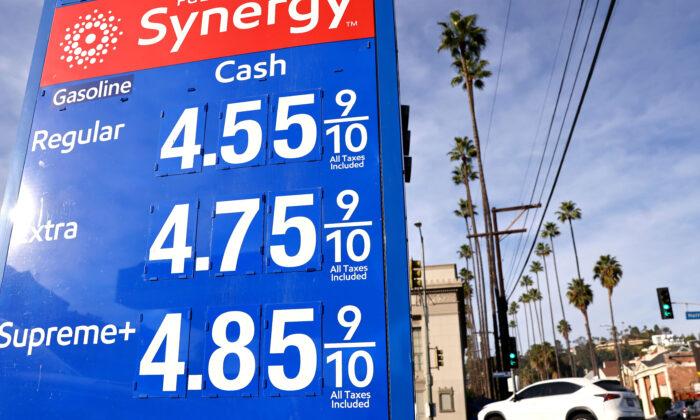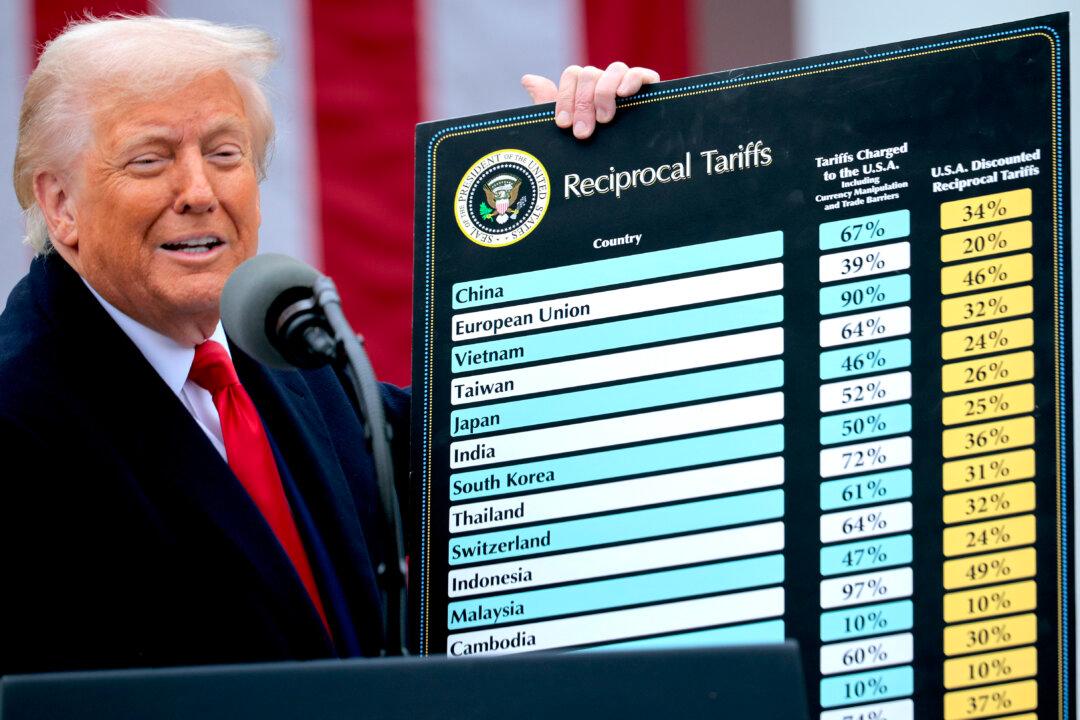News Analysis
Americans are expected to spend more on gas in the new year if Wall Street predictions play out.
While the U.S. government says gas prices will fall below $3 per gallon in 2022, many analysts are forecasting the opposite.
With strong global demand and “underinvestment” in the oil and gas sector, prices at the pump are likely to continue their upward march in 2022 and even in 2023, further fueling inflation.
Despite the recent slump in oil prices because of fears over the Omicron coronavirus variant, both international benchmark Brent crude and U.S. benchmark West Texas Intermediate (WTI) rose by more than 50 percent in 2021, closing the year at about $80 and $76 per barrel, respectively.
JPMorgan analysts are predicting that Brent crude prices will hit $125 per barrel in 2022 and $150 in 2023.
The Organization of the Petroleum Exporting Countries and Russia (OPEC+) oil cartel has limited capacity to boost production, Christyan Malek, JPMorgan’s head of oil and gas research,
wrote in a recent report.
“OPEC+ is not immune to the impacts of underinvestment,” the report reads.
Goldman Sachs is also maintaining its bullish stance on oil. Damien Courvalin, head of energy research at Goldman Sachs said oil prices could hit
$100 in 2023 if supply can’t keep up with strong demand.
According to Courvalin, output growth is hindered by challenges, including cost inflation and more expensive financing as investors steer capital away from fossil fuels.
The United States and several other countries announced in November a coordinated release from strategic petroleum reserves to bring down the rising oil prices, which Goldman Sachs called “a drop in the ocean.”
Francisco Blanch, Bank of America’s head of global commodities, also predicted that Brent crude oil could shoot up to
$120 per barrel in June 2022.
These projections shouldn’t come as a surprise. Industry executives have been ringing alarm bells for months about the massive underinvestment in the oil and gas sector.
Global upstream—exploration and production—investment in the sector in 2021 sank to nearly
$350 billion for a second consecutive year. This was 25 percent lower than 2019 levels, according to a recent
report by International Energy Forum. Meanwhile, demand for oil and gas has neared pre-pandemic highs.
Investments in oil projects in the United States have also dipped, mainly due to uncertainties around the country’s transition to clean energy. U.S. oil production still stands
1.4 million barrels per day below its pre-pandemic level of 13 million, according to the Energy Information Administration (EIA). This has left oil imports from
Russia to fill the void.
Demand has outpaced supply since the
third quarter of 2020. If this trend continues, the world will head for an energy crisis, critics say. They blame governments for pursuing an abrupt end to fossil fuels and have even likened their efforts to the chaotic U.S. withdrawal from
Afghanistan.
But the U.S. government is confident U.S. producers will pump more oil in 2022. The domestic crude oil production will reach
12.1 million barrels per day toward the end of 2022, according to EIA’s predictions. This may relieve the price pressure at the pump. The government agency is forecasting the average gasoline retail price to fall to $2.88 per gallon in 2022 from the current level of $3.28.
A recent forecast from GasBuddy, an app that tracks fuel prices, shows that gas prices could hit
$4 per gallon in May and June before easing toward the end of 2022 with additional production coming online.
However, U.S. shale producers have been hesitant to invest in production, despite high oil prices. In 2021, many used their cash flows to reduce debt or reward shareholders via dividends or share repurchases instead of reinvesting in operations to grow oil output.
U.S. energy independence was the result of the shale revolution, which enabled the country to significantly boost its production since 2008. The shale boom made the United States the world’s largest oil and gas producer and a leading exporter of the fuels. It also created millions of jobs.
Before the pandemic, however, many producers were under significant financial distress, as most were debt-ridden. The low oil prices hurt their cash flows and pushed some of them to the brink of bankruptcy.
Despite the recent rally in oil prices, domestic producers are in no rush to pour money into drilling new wells, as they have been discouraged by the Biden administration’s climate policies and Build Back Better plan, according to
Jerry Simmons, president of the Domestic Energy Producers Alliance.
It’s unclear whether U.S. oil producers will slowly pump more oil as the year progresses, but they’re most likely to be in the driver’s seat in 2022.





